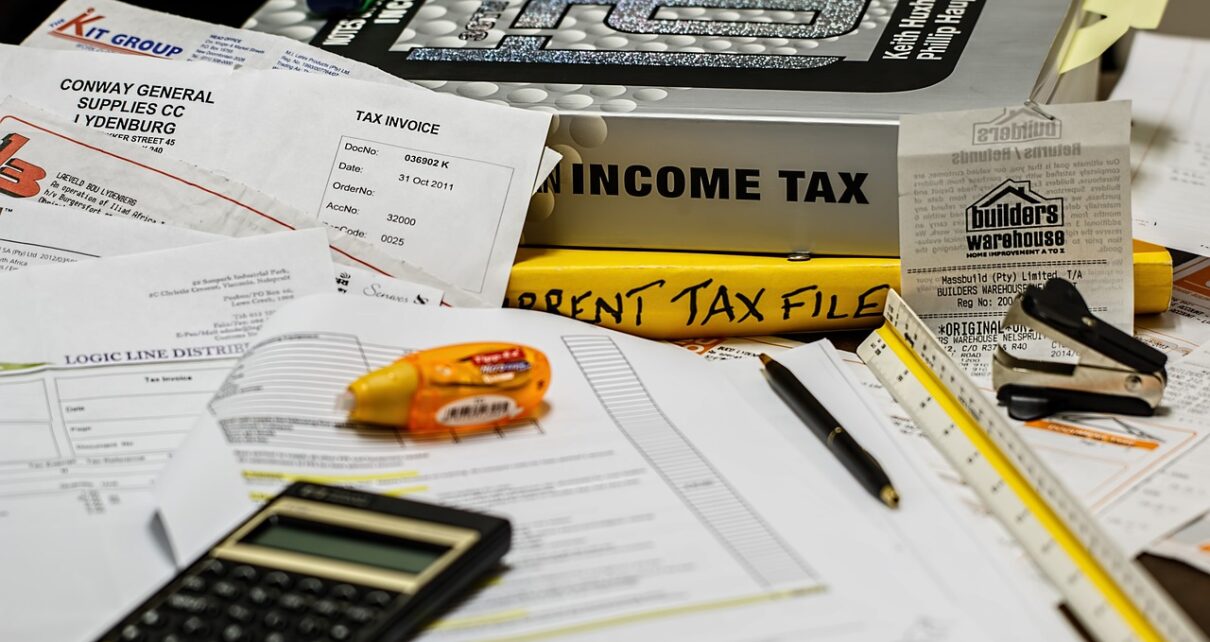In India, like other countries, trading in Foreign exchange is subject to taxation. Correspondingly, understanding the tax implications of Forex is important for traders to manage their finances effectively. This Traders Union article provides helpful information on the Forex tax in India, offering insights that can help traders make the best out of the market.
Taxation of Forex trading profits in India
Forex trading income in India attracts income tax as per applicable rates under the Income Tax Act of 1961. Accordingly, the specific tax rate applied depends on the taxpayer’s total income for that financial year. With this, Foreign exchange traders need to fully comprehend the tax implications of their trading activities to ensure tax law compliance. In addition, the tax treatment is influenced by factors such as residency status, income classification, and the nature of trading.
Subsequently, there are two primary tax categories, namely direct and indirect taxes. Direct taxes like income tax apply to the actual trading gains made, while indirect taxes include Goods and Services Tax (GST), Securities Transaction Tax (STT), and stamp duty charges on transactions.
Remarkably, Traders Union experts emphasized that the income classification of trading gains is critical. If considered a business activity, the profits attract income tax rates as business income.
In light of this, clarity on the tax treatment is essential for Indian Forex traders to effectively handle tax filing of their trading income and returns. Understanding the key aspects of Forex tax in India is crucial for informed decision-making to avoid errors.
How is Forex trading taxed in India?
Forex tax in India depends on whether the income is categorized as business income or capital gains. Notably, most Forex traders declare their trading income as business income since it is more tax-efficient. As per Indian tax laws, income from trading currency derivatives like futures and options is considered non-speculative business income. Tax rates on business income range from 5% to 30% based on the tax bracket. At the same time, there is no delivery-based trading of currency pairs in India, only cash-settled derivatives trading is allowed.
Indirect taxes also apply to Foreign exchange transactions, including 18% goods and services tax (GST) and stamp duty which varies across states. Additionally, charges like brokerage fees and Securities and Exchange Board of India (SEBI) turnover charges are applicable.
Who should pay taxes in India?
According to Traders Union, taxation in India is based on an individual’s or entity’s residential status during the relevant financial year. Accordingly, resident status is determined by either spending 182 or more days in India during the tax year or being present for at least 60 days along with 365 or more days over the preceding four tax years. Consequently, individuals who do not meet the residency criteria are classified as non-residents.
Resident taxpayers are required to pay tax on their global income in India, irrespective of where the income is earned. In contrast, non-residents only need to pay income tax that is sourced in the country. Correspondingly, any foreign income non-residents earn outside India is not subject to local taxes.
Moreover, a special category of non-resident Indians (NRIs) exists as well, where individuals pay taxes on incomes like long-term capital gains from share sales at 10% plus applicable surcharges and cesses. The nature of income and residential status dictates the exact tax treatment for NRIs.
Key Tax deductions for Indian traders
Various provisions under the Income Tax Act in India allow traders to claim deductions on expenses incurred in the course of trading activities. Here are some key deductions traders should be aware of:
- Deduction for business expenses: business-oriented traders can claim deductions for legitimate business-related expenses, thereby reducing their taxable income.
- Section 80C exemptions: all traders can invest in eligible schemes under Section 80C, such as the Public Provident Fund (PPF), National Pension System (NPS), and Equity-Linked Saving Scheme (ELSS), to avail of exemptions from their taxable income.
- Long-term capital gains exemptions: long-term investors in Forex trading may be eligible for exemptions on capital gains if the investment is held for more than one year.
- Deduction for intraday trading losses: intraday traders can carry forward their trading losses for up to eight years, allowing them to set off these losses against future profits.
- Income-splitting strategies: traders can explore income-splitting strategies by distributing income among family members, potentially taking advantage of lower tax brackets within the family and optimizing overall tax obligations.
- Foreign tax credit: residents earning income from foreign countries, including Forex trading income, may be eligible for a foreign tax credit to avoid double taxation.
Maximizing tax benefits: the best Forex trading time in India
In the context of tax deductions for Indian traders, exploring the dynamics of Forex trading in India is crucial. Forex trading in India experiences significant volatility, especially during periods when multiple global trading sessions overlap.
The first hour of each new trading session is the best time to trade Forex in India from a day trading perspective, especially on Mondays when markets react to news and events over the weekend. In line with this, intraday traders should monitor key economic data releases, central bank announcements, and geopolitical developments that can cause spikes in volatility and trading volumes during the Asian, European, and American trading sessions.
Specifically, the peak trading hours, between 6:00 am to 12:00 pm and 6:00 pm to 12:00 am Indian Standard Time, were seen as high liquidity as traders from major financial centers like London, New York, Tokyo, and Sydney are actively trading.
Meanwhile, the Sydney session (12:00 am to 6:00 am IST) tends to have lower volatility, while volatility increases during the overlapping Tokyo and Singapore sessions (6:00 am to 9:00 am IST) and further rises when the London session opens at 9:00 am IST. Eventually, the peak volatility lasts for 3 to 4 hours from the London open as European traders dominate volumes.
Paying attention to times of overlapping liquidity and volatility among these trading sessions can help Indian Forex traders improve execution quality and capitalize on short-term price movements across currency pairs.
When should you pause Forex trading?
Knowing when to take a break from trading is as important as knowing when to enter trades in the Forex market. During periods of low liquidity and unexpected volatility, it may be essential for Indian traders to pause trading to avoid losses. The Wheon article, drawing from TU’s insights, emphasized that the currency market can be divided into four trading sessions: Pacific, Asian, European, and American. Here, major news events and data releases often spark volatile price swings as the markets digest the new information. Experts recommended avoiding placing trades around these events unless you have a high-risk appetite.
Overnight currency rollovers can also create unexpected losses if a trader has open positions in certain exotic currency pairs or currencies with divergent interest rates. Consider closing out positions well before the 5 pm IST rollover cut-off time to avoid being caught on the wrong side.
Furthermore, it helps to pause trading when traders feel fatigued while staring at the charts. Burnout and frustration often impair trading judgment. Remarkably, knowing when not to trade is sometimes more useful than spotting trading opportunities.
Image by Steve Buissinne from Pixabay
Disclaimer: The content of this partner post is provided by Traders Union. The statements, views and opinions expressed in this column are solely those of the content provider and do not necessarily represent those of NewsBTC. NewsBTC does not guarantee the accuracy or timeliness of information available in such content. Do your research and invest at your own risk.





